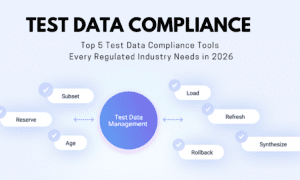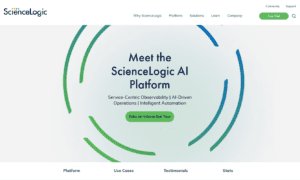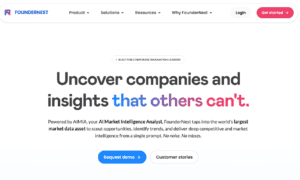In boardrooms across America, you’ll hear the same phrase from leaders of successful mid-market companies: “We make a great product, and our customers love us.” But in today’s market, product quality is no longer enough. Brands that once dominated through craftsmanship, service, and loyalty are losing ground, quietly and quickly—because their digital capabilities can’t keep up with the expectations of a tech-native customer base.
Welcome to the innovation gap: the widening divide between companies that build great things and those that build great systems to deliver them.
When Legacy Excellence Meets Modern Friction
It’s not that these companies have failed. On the contrary, many have thrived for decades, establishing beloved reputations in foodservice, manufacturing, retail, logistics, or consumer goods. They’ve built their businesses on craftsmanship, consistency, and a deep understanding of their markets. What’s faltering now isn’t the quality of their product. It’s everything that surrounds it, the infrastructure, interfaces, and integrations that today’s customers expect but yesterday’s systems can’t support.
- Clunky ecommerce or mobile experiences that frustrate buyers accustomed to instant checkout, real-time updates, and frictionless returns
- Inflexible back-end systems that can’t adjust quickly to supply chain shifts, resulting in fulfillment delays or mismatched inventory
- Disconnected data that blocks personalization, cross-sell opportunities, and timely support—turning loyal customers into churn risks
- Manual workflows that slow down onboarding, invoicing, and internal collaboration, consuming time and resources better spent on innovation
These breakdowns may seem minor at first, an extra minute here, a failed integration there. But they accumulate into systemic drag. The irony? These aren’t failures of ambition. They’re symptoms of a business model built for a pre-digital era—now stretched beyond its design limits in a world that demands speed, automation, and continuous improvement.
And in the eyes of the customer, even the best product can’t outrun a broken experience.
The Hidden Cost of Falling Behind
Digital isn’t just a nice-to-have anymore. It’s the delivery mechanism for trust, convenience, and competitive edge. According to a 2024 McKinsey report, companies in the top digital quartile grow revenue twice as fast and maintain 30% higher margins than their analog peers.
And yet, many mid-sized non-tech businesses, especially those earning $50M to $500M annually, are caught in a dangerous middle ground:
- Too big for small tools and piecemeal fixes
- Too lean to absorb a full-scale digital reinvention without guidance
- Too successful to notice the creeping risk until a competitor leapfrogs them
“We see it all the time,” says Mary Elzey, Chief Strategy Officer (CSO) of Stable Kernel, a digital transformation firm that works with non-tech brands across foodservice, manufacturing, and CPG. “You have a product that outperforms the market, but the digital infrastructure is brittle. Customers expect Amazon-level experiences. If you can’t deliver that, no matter how good your product is, someone else will win the relationship.”
What Catching Up Looks Like
The good news? Closing the innovation gap doesn’t require becoming a tech company. It requires thinking like one, strategically.
- Modernization Without Mayhem
Start with systems that block growth. For many, that means legacy ERPs, outdated CRMs, or siloed ecommerce stacks. The goal isn’t a rip-and-replace. It’s layering modern architecture (APIs, microservices, event streams) to enable agility without disruption. - Customer-Centered Design
Don’t build what you want, build what they need. Leading firms are investing in UX research, journey mapping, and real-time feedback loops to redesign digital experiences around actual customer behavior. - Data as an Asset, Not a Byproduct
Your data is your moat. But too many brands treat it like exhaust, something collected but never activated. Centralizing customer, product, and operational data unlocks predictive analytics, personalized marketing, and faster, smarter decisions. - Cross-Functional Alignment
The real bottleneck isn’t always tech, it’s communication. High-performing firms break down silos between IT, ops, marketing, and finance to ensure digital investments ladder up to shared business outcomes.
Why This Matters Now
According to Stable Kernel, an enterprise digital transformation agency, the next decade will be shaped by how companies adapt their operations to meet digital-first expectations. This isn’t just a race for efficiency, it’s a race for relevance.
Brand loyalty is being redefined. Not by slogans or heritage, but by speed, simplicity, and consistency across every touchpoint.
Your product may still be the best on the shelf. But if the path to get it, from order to delivery, is slower, harder, or less personalized than your competitors’? That product will stay on the shelf.
Closing the Gap — Before It Closes In
Every company today is, in some way, a technology company. Not because they make software, but because software is how they scale, serve, and survive. Those who understand this early, and act intentionally, will win.
The others?
They’ll be remembered for how good they used to be.



































